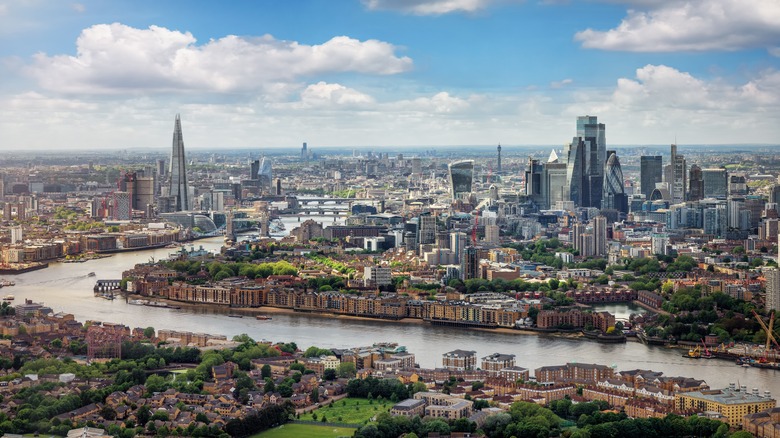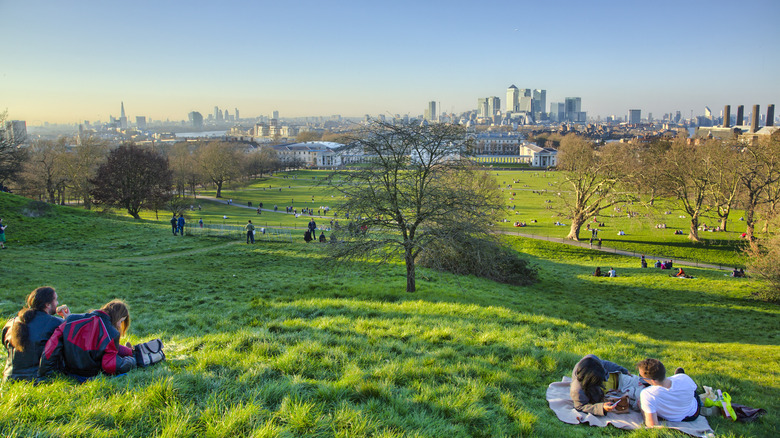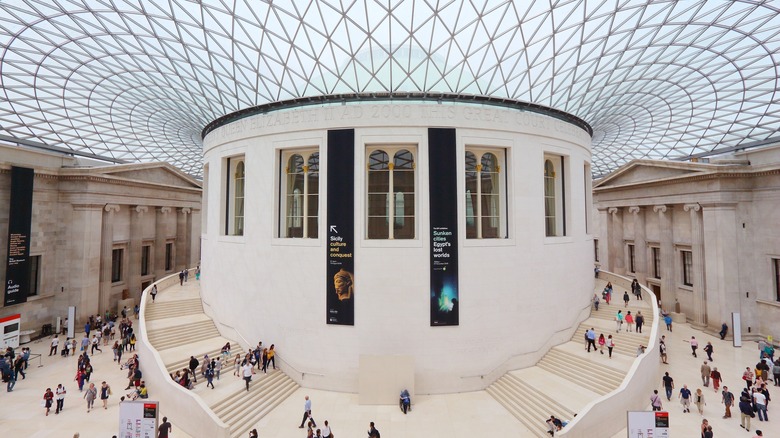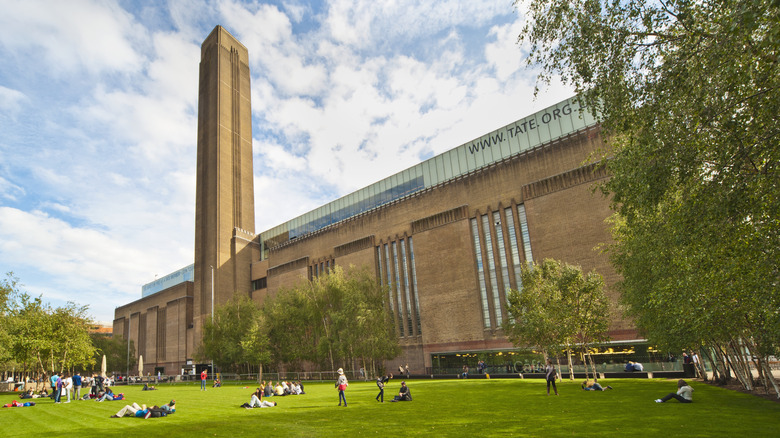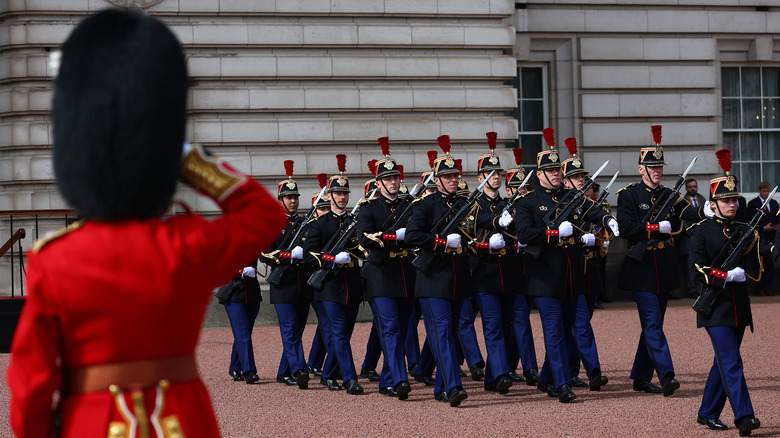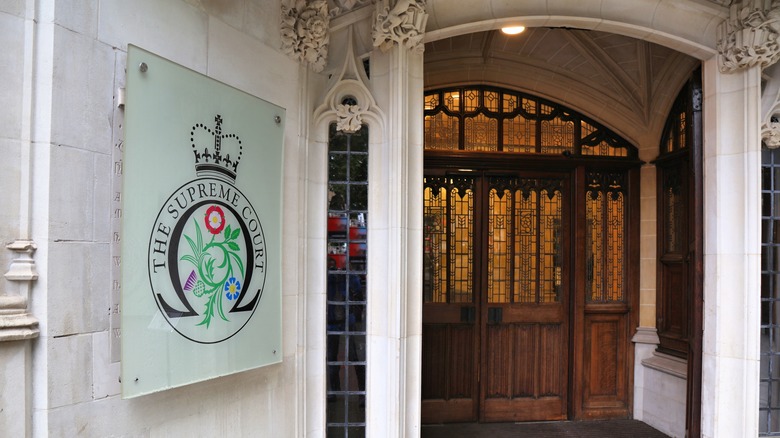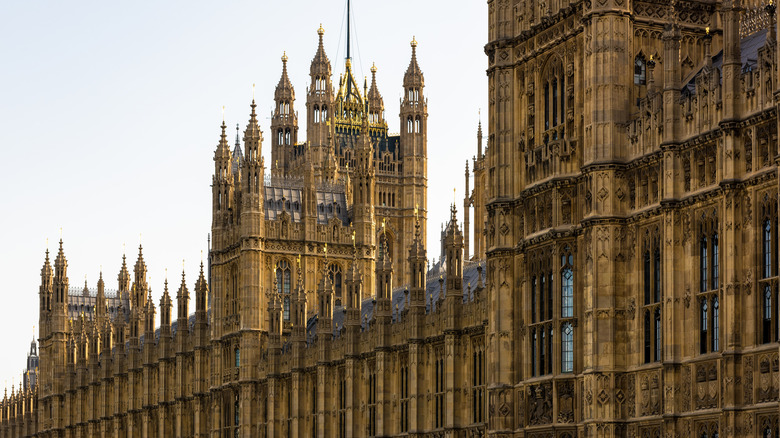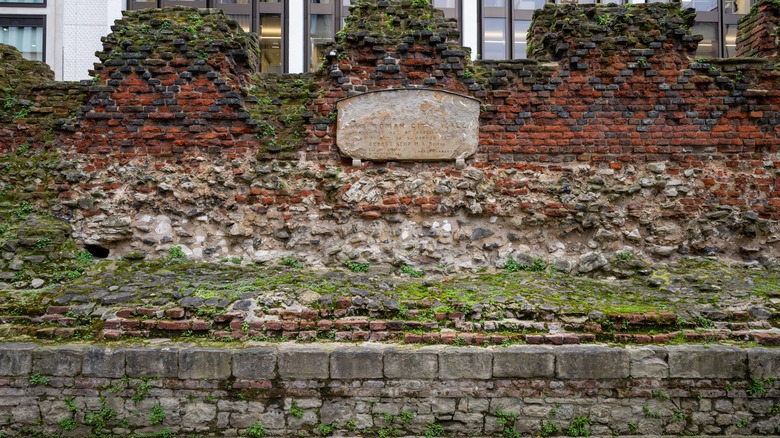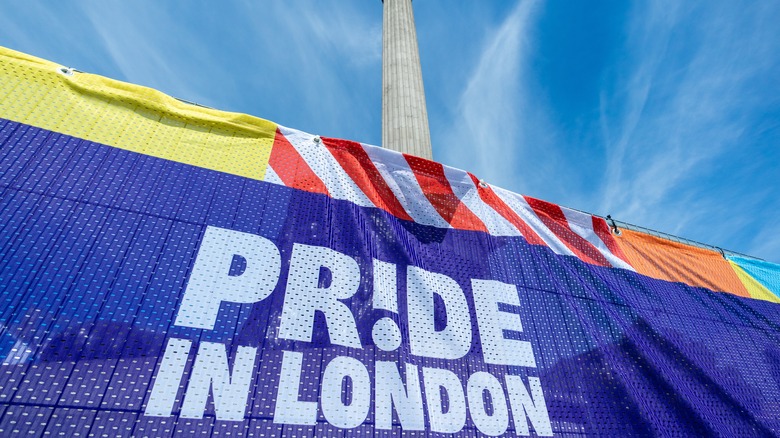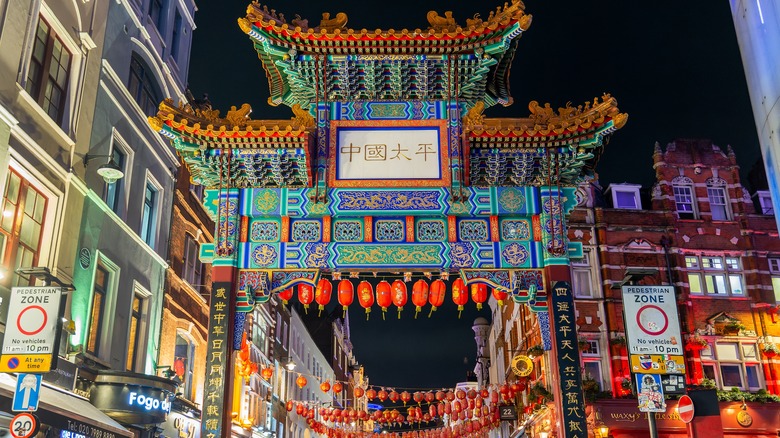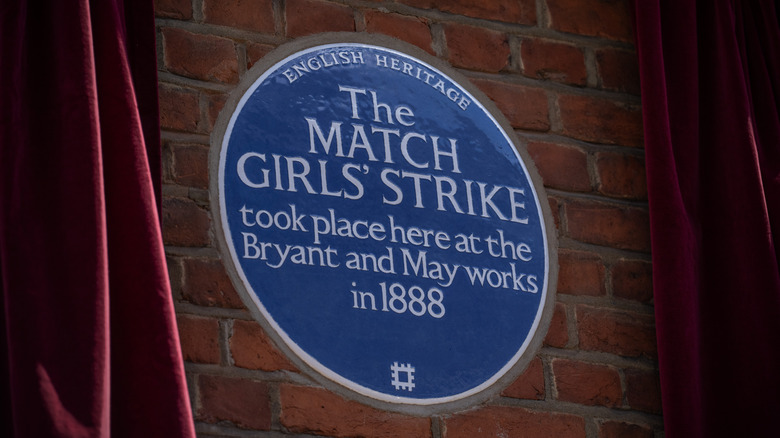The Best Free Things To Do On Your Next Trip To London
England's capital city, London is a metropolitan hub of fashion, industry, tourism, and so much more. London has remained an international destination and welcoming center of global movement since antiquity. The city is nearly as old as the Christian faith and has played host to one of the world's most enduring monarchal systems to ever exist. Modern day visitors will likely want to explore things like the Big Ben clocktower just outside the nation's Parliamentary building, take the inching ride skyward in the London Eye, or down a pint in one of London's many famous pubs.
Plenty of fabulous activities await visitors coming to walk the winding streets of London Town, but many of them will cost you. Climbing up the O2, exploring the wax sculptures at Madame Tussauds (sometimes thought of as a tourist trap, anyway), or heading up to the viewing deck in The Shard require advanced bookings or at least purchased tickets. Quality attractions as they are, visitors will no doubt want to include a few free stops along their adventure, too. Fortunately, London is full of wonderful cost-free options. From walking along the River Thames to pensively gazing at art installations, these are some of the most exciting things you can find yourself engaged in after hopping across the pond to see England's largest city. As a former resident of London's boroughs, many of these activities are close to my own heart.
Explore London's many excellent parks
There's something quite special about taking a walk in one of London's parks. These greenspaces offer a relaxing pause to anything else that might be going on in your life. Whether it's work stress or the fatigue that comes from a rapid-fire vacation itinerary, taking a few moments to walk in one of these city parks and breathe in the fresh air is a potent and relaxing balm.
Fortunately for visitors, there are roughly 3,000 parks in the city, making up around 20% of London's total land area. From Greenwich Park in the southeast (home to the observatory through which the Greenwich Mean Time line passes) to St. James's Park, a 57-acre rolling green landscape abutting Buckingham Palace, greenery is everywhere in London. In fact, a stroll through the latter of the Royal Parks (of which there are eight) is one of the best things to do on a day trip to London.
London parks are famed for their gardens, foliage, and even added amenities. Tennis or cricket enthusiasts can get in on a game in many of them, and pick up soccer or basketball takes place across courts in numerous green areas of the city. For those looking for a bit more relaxation, grabbing a cup of coffee or tea or even reaching for a stronger beverage while meandering is a common sight among Londoners taking a load off in the city's greenways.
View colonial treasures housed in the British Museum, but keep in mind its problematic nature
The British Museum is an institution in London. The establishment opened its doors in 1759 — making it older than the United States — and throughout history, the museum has been a resting place for treasures collected from all across the globe. The British Museum was created as "the world's first free, national, public museum" open to "all studious and curious persons," according to the museum itself. Collections found here include Ancient Egyptian artifacts, objects dating back to the Roman Empire, Assyrian treasures, Ancient African items, and much more.
The sprawling nature of the museum and its status as a free institution of learning and curiosity make for a marvelous stop on an adventure of the city. However, it should be remembered that if you're going to be visiting the museum, you'll be exploring the plundered treasures of cultures affected by British colonial expansion. These artifacts didn't arrive in London by accident. National tapestries of history itself have been plundered by British explorers of old, and the museum maintains its innocence in the continued colonial aggression of merely keeping possession.
One of the most well-known points of conflict in this arena is over the Benin Bronzes. The Kingdom of Benin produced around 5,000 sculptures, icons, and figurines, primarily between the 13th and 16th centuries, and they were subsequently looted when British soldiers arrived in 1897. Their foreign home in London (and elsewhere) precludes those whose ancestors created them from easy access — perhaps even any access at all.
Swim in a sea of breathtaking artwork across London's free galleries
On a more positive note, there are quite a few free art galleries across London that don't call the entire colonial project of the past into question and demand a sort of moral grappling when visiting them. Museums and galleries like the Queen's House, the National Gallery, the Victoria and Albert Museum, the Tate Modern and Tate Britain, and the Guildhall Art Gallery and Roman Amphitheater are just a few free opportunities to explore wonderful works of art. These are also rated as some of London's best museums overall.
London has long been a haven for artists and artwork. It's this spirit that persists in galleries and shows across the city. While there's a darker side to artifacts that stand resolutely in British halls, artwork is far less contentious in most cases, allowing for a flowing enlightenment when viewed by an open mind. With so much to see, visitors can truly find themselves lost in the history of painting, photography, and many other mediums of artistic expression in the city, and without paying admission, for that matter!
Witness the Changing of the Guard at Buckingham Palace
The Changing of the Guard is a special performative endeavor that takes place (generally) on most mornings. It's a parade that brings a regiment of royal guards to the gates of the palace to relieve the previous cadre of British soldiers standing by to protect the king. The regal ceremony takes close to an hour to fully work through its entire course. The guards march up the street to arrive at the palace, accompanied by a band, mounted cavalry service members, and police escorts. The ceremony is a tradition that has remained a part of British royal existence for generations (starting formally during King Henry VII's reign from 1485 to 1509).
The event is an excellent opportunity to snap a few pictures in front of the palace, as the gates will be opened for a brief period of time. You won't be able to walk in with the guards, but witnessing the handover and catching a less obstructed glimpse of the majesty that is Buckingham Palace is well worth the trip out to the Green Park tube station (the nearest tube location to the palace) for the morning celebration of British royal decorum.
Listen to case litigation at the UK's Supreme Court
The United Kingdom is a state built upon a long legal history. The Common Law of England was established around 1,000 years ago and continued building legalistic thinking on top of preexisting English legal scholarship that dates back even further, generations before the Norman conquest of the island. As such, witnessing law in action in the U.K. is a unique sight. Fortunately, visitors coming to London have the ability to watch British law taking place right in front of their very eyes without having to pay for the pleasure.
Sitting in on the Supreme Court's hearing of a case can be a novel and incredibly entertaining activity that brings you into contact with a different side of London than you might first envision. Outside the museum halls and glorious architecture of the city, plenty of tangible experiences are waiting to be unearthed. Listening to cases being tried at the Supreme Court offers a fundamentally different view of London happenings, and it's a somewhat somber reminder of the societal forces that underpin our everyday experiences in the modern, civilized world. Court is typically in session on Mondays and Tuesdays from late morning until 4 p.m. This gives visitors plenty of time to grab a bite to eat and then head into the gallery to listen in on proceedings.
Attend a session of Parliament
Another legal activity, sitting in the gallery that overlooks the Parliament floor can be a wonderful exercise in learning about governmental goings-on and provide some great entertainment value at the same time. Both houses are open to public viewings without prearranged tickets or any kind of purchase necessary. The House of Commons is in session before the House of Lords, but both chambers are open to the public from Monday to Thursday and sometimes on Fridays as well. The British government works quite differently than the American federal system; when giving speeches to the floor, ministers are routinely asked questions by those seated in the chamber. The result is a constant rising and sitting by people engaged in oration, and the back and forth can become fairly contentious and even humorous. There have been plenty of times when members of Parliament have taken snipes at each other to the roaring cheers of their colleagues, who get a great kick out of the kerfuffle.
Whether you're attending a tame session or a more raucous affair, listening in on a session of the British government's procedural affairs is a great way to enjoy a sleepy afternoon in the nation's capital. This is a particularly nice option on a rainy day that might force you to find activities indoors. Centrally located and impossible to miss — considering the giant clocktower attached to the sprawling building that runs visually into the north end of Westminster Bridge — exploring the halls of Parliament is a great way to enjoy London for free.
Step back in time with a view of London's Roman Wall and other ruins
London was founded as a Roman outpost in A.D. 43 (then called Londinium), although there's evidence that roaming tribal peoples called the area home at times dating back as far as 6,000 years before our modern footsteps on the "ancient" cobblestones of historic London. It's thought that "London" and its Roman precursor might stem from pre-Celtic naming conventions for the marshy landscape, but this is still a working theory among linguists. Work crews occasionally come across buried ruins of time immemorial when working on new sections of the Tube or digging to create foundations for new structures, reminding Londoners and visitors alike that history has cast a tremendously long shadow over the place, regardless of what its people have opted to call it at each intervening point in time.
While some of London's primordial history may remain a mystery forever, the Roman saga of the community has been well-explored and preserved. There are numerous sections of exposed Roman walls that once ringed the ancient city standing in the open air. Ruins abound along the River Thames and elsewhere, giving visitors a truly historic look at what certain parts of the city may have served its people as in ages past. Sites like Tower Hill, the Leadenhall Market, and Clink Street (near London Bridge and Southwark Bridge) all showcase remnants from this ancient foundational time. For more examples of England's Roman history, consider heading to Bath, a under-the-radar destination that makes a great day trip option from London.
Take in a century of 'Queer Britain' history
Located centrally in Kings Cross, Queer Britain is the first museum of its kind in the country. The establishment is dedicated to celebrating and exploring the history of LGBTIQ+ people and movements in the U.K. It's a charity organization-turned brick-and-mortar icon. In 2022, when the museum was established, it hosted more than 50,000 visitors looking to explore the century-plus history of queer culture in England. While being gay has tragically come with many stigmas throughout history and across the world, it was criminal to act on these feelings in the U.K. until 1967. Functionally, homosexuality wasn't truly decriminalized in the country until roughly a decade ago (in 2013)!
Queer Britain is a place that celebrates and welcomes those in the LGBTIQ+ community, as well as their straight allies looking to understand the lifestyles and struggles of their friends and family members a little better. Queer Britain notes that it calls itself by this name precisely because the "Q" is "the most inclusive letter under the LGBTIQ+ umbrella," while actively working to reclaim a term that spent so long as an abusive and othering term in the social zeitgeist. For activists and allies of all stripes, a visit to this free museum that lionizes the struggle, joys, and history of this marginalized community is a must.
Celebrate Chinese New Year in Chinatown or St. Patrick's Day in Trafalgar Square
The social calendar of a Londoner is littered with tremendous opportunities to get out and about in the city and experience a cultural extravaganza. From the Chinese New Year celebrations that kick off in London's centrally located Chinatown neighborhood (near Leicester Square, Piccadilly Circus, and Covent Garden, places where you may even spot a celebrity or two
) to the St. Patrick's Day parade and festival events that march their way through and take over Trafalgar Square every March, there's so much to see and do in London. The London Marathon is another yearly occurrence that makes its way into the very bones of the city. It's one of the major events in professional racers' calendars, so the marathon is a great opportunity to watch some of the world's greatest distance runners wind their way across the city and over its numerous iconic bridges.
If you happen to be in town during one of these celebrations, taking a bit of time to explore a slice of diaspora culture in one of the most radically diverse cities on the planet is a fantastic way to see London in all its nuanced shades. One uniquely British celebration, however, is Guy Fawkes Night (or Bonfire Night, taking place on November 5 every year). Fawkes famously attempted to assassinate the British parliamentary government and king in the failed Gunpowder Plot of 1605. Londoners take to the streets to launch fireworks throughout the night in commemoration of this unique historical event.
Hunt down the city's blue plaques, highlighting historic residents of modern London
The blue plaques littered throughout London showcase some of the most important historical figures and events that have shaped the city and the world. Iconic inclusions include the likes of Jimi Hendrix, Mahatma Gandhi, and Alan Turing, among more than 1,000 total entries. They tell the story of London's continued transformation throughout history, starting with the first plaque, which notes the presence of French Emperor Napoleon III near St James's Square and placed in 1866.
These plaques can be seen fastened prominently to London architecture all across the city but are condensed in its central reaches — perhaps for obvious reasons. A visitor exploring London might consider hunting down a few of their favorite musicians, artists, or writers' plaques while in town in the same way that tourism in Poland's western city of Wrocław has become a haven for tiny gnome hunters. With hundreds to catch a glimpse of, there are more than a few exciting stories to track down while wandering through London's streets.
Sit down with a pint and listen to a free gig in a London pub
Pub culture is big in London. With over 4,300 establishments spread throughout the Greater London metro area and over 2,000 in central London alone, you'll have your fair share of options when searching for a pint. London pubs often serve cask beers (Doom Bar is found virtually everywhere and acts as a good starting point, but is by no means the end all be all of cask pours) alongside the more established commercial brews, so opting for one of these will put you in good company when striking up a conversation with locals out for a tipple.
To add to your experience in a London establishment, it's a good idea to hunt down a free gig to up the ante on the atmosphere you're enjoying. London pubs all over town feature live music on a regular basis. Places like The Troubadour in South Kensington feature jazz musicians on multiple evenings every week, and Camden is another neighborhood that often hears a few tunes streaming out of the pub scene. The town has long been associated with musical excellence, and there's no shortage of modern musicians hoping to catch their break while playing a gig at their local (or somewhere else in town). Catch some free music while sipping your pint, and you'll fit right in with the cadres of Londoners who take to the streets for an evening of socializing.
